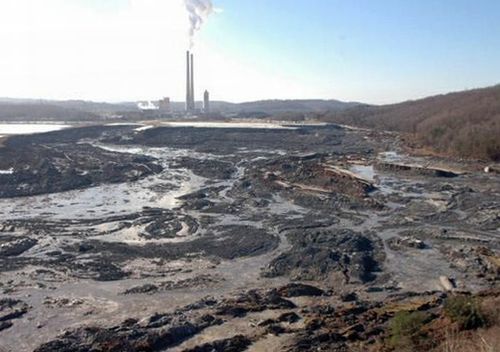A coal fired power plant works much like that of a nuclear station: 1). Heat is created and coal is burned, 2). Water turns to steam, 3). Steam turns the turbine, 4). Steam turns back into water, 5). Electricity and waste (coal ash) are produced. This waste is then sent to landfills, ponds, or mines. Roughly 140 million tons of coal ash is generated annually. To put this into perspective- this is enough to fill train cars stretching from the north to south pole. This waste is comprised of arsenic, lead, mercury, chromium, and other radioactive toxins. One of the worst environmental disasters occurred on December 22, 2008. A Tennessee coal pond dike failed- releasing 5.4 million yards of coal ash into a community. The sludge cascaded into rivers and smothered over 300 acres of land (aerial video), and accumulated a tab around $1.2 billion. Considering the staggering economic and environmental costs, coal ash must be highly regulated, correct? Actually... no. Nothing exists. This has been discussed for years, but typical politics... disagreements and lawyers are delaying any decision. DRIVES.ME.CRAZY. Recently, a spill at Dan River in North Carolina has resulted in an outrage. Another episode? After people were reassured on the responsible disposal? I would be a madman. Encouraging news, on December 19, the EPA is set to announce first-ever potential regulation plans. Fingers crossed.
Be Authentic - Sterling
0 Comments
Leave a Reply. |
Sterling FaubelDallas, TX Archives
January 2017
Categories |



 RSS Feed
RSS Feed
